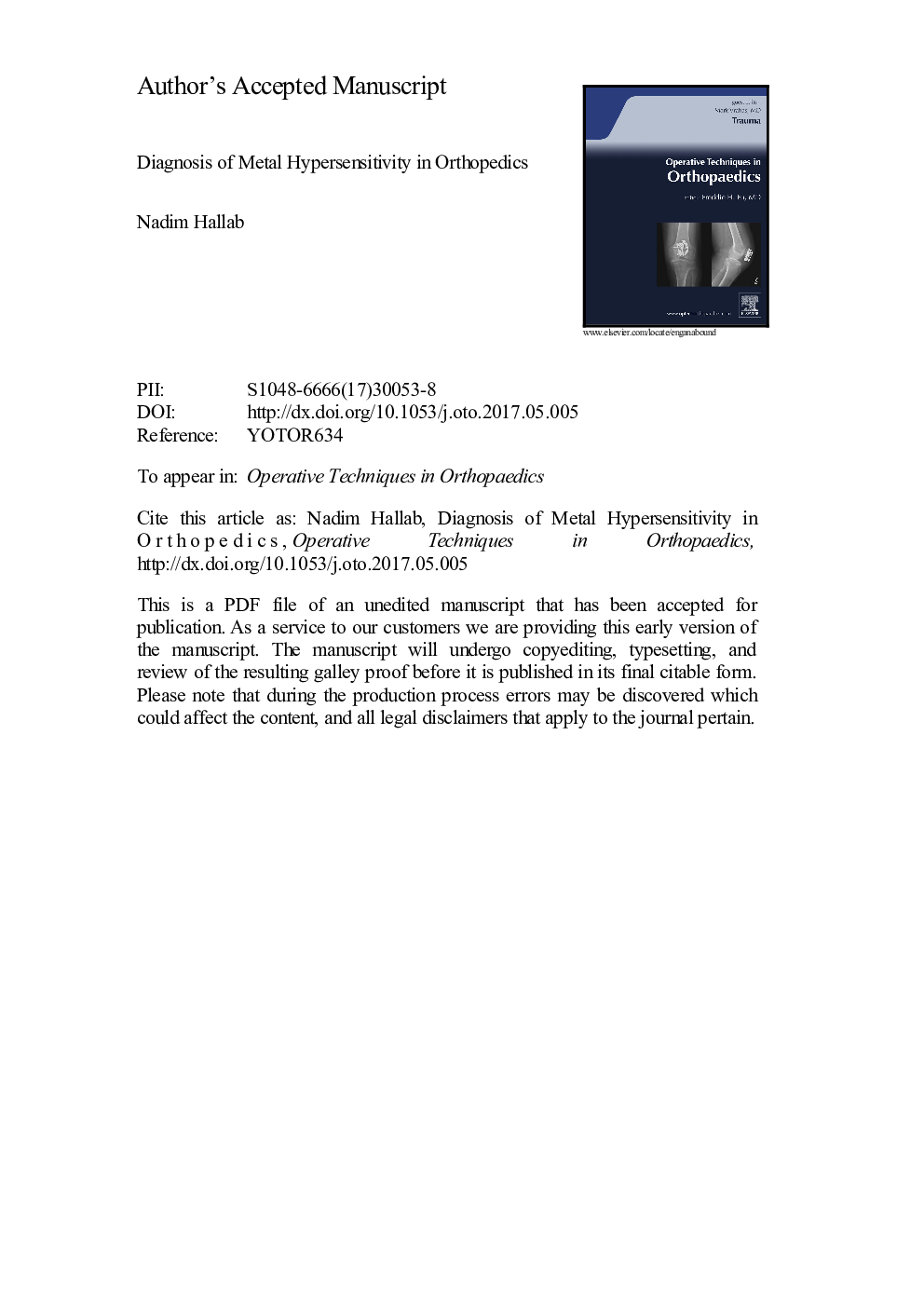| کد مقاله | کد نشریه | سال انتشار | مقاله انگلیسی | نسخه تمام متن |
|---|---|---|---|---|
| 5710846 | 1604704 | 2017 | 29 صفحه PDF | دانلود رایگان |
عنوان انگلیسی مقاله ISI
Diagnosis of Metal Hypersensitivity in Orthopedics
ترجمه فارسی عنوان
تشخیص حساسیت به فلز در ارتوپدی
دانلود مقاله + سفارش ترجمه
دانلود مقاله ISI انگلیسی
رایگان برای ایرانیان
کلمات کلیدی
موضوعات مرتبط
علوم پزشکی و سلامت
پزشکی و دندانپزشکی
ارتوپدی، پزشکی ورزشی و توانبخشی
چکیده انگلیسی
The pathology of early aseptic implant failure has been linked in basic science, case, and group studies to metal implant debris-induced delayed-type hypersensitivity (DTH) responses (or metal allergy). However, a precondition of metal DTH does not always result in implant failure. The methods of diagnosing metal DTH responses measure cell-mediated adaptive immunity, where conditioned lymphocytes respond to specific stimuli. Metal-sensitivity testing is a direct test of an individual's immune response to metal challenge, which has been in use for over the past half century to measure delayed-type responses to drugs (such as antibiotics) where the results indicate levels of immune reactivity. Currently approved methods for human diagnostic testing for metal DTH include both skin testing (patch testing) and in vitro blood testing using lymphocyte transformation testing (LTT). LTT testing may be better suited for diagnosing implant-related sensitivity, given the ability of dermal exposure to metals to induce DTH responses. Metal sensitivity among the general population has been well established with a rate of 10%-15%, where hypersensitivity to nickel is the most common. However, it remains unknown about the exact percentage of these presensitized people that will go on to develop pathogenic metal-sensitivity responses to their implant. Recent studies show that when exposure to metal implant debris is minimized, the chances of metal DTH reactivity are also minimized. Further, past basic science studies, case studies, and cohort studies indicate the clinical utility of metal-sensitivity testing in specific patient populations. Continuing clinical outcome studies are needed to relate positive patch and metal-LTT test results with other clinical determinants to more definitively predict and prevent pathologic reactivity to implants.
ناشر
Database: Elsevier - ScienceDirect (ساینس دایرکت)
Journal: Operative Techniques in Orthopaedics - Volume 27, Issue 3, September 2017, Pages 168-177
Journal: Operative Techniques in Orthopaedics - Volume 27, Issue 3, September 2017, Pages 168-177
نویسندگان
Nadim PhD,
